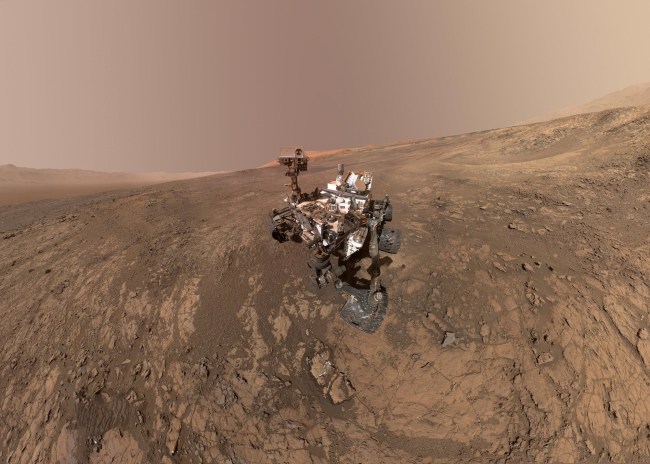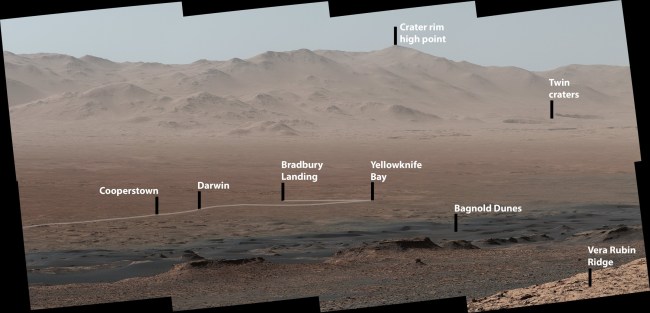Even robots on another planet are so vain that they can’t help but to snap a selfie of themselves. NASA’s Curiosity rover took a magnificent selfie while posing with a stunning landscape in the background. NASA rovers, they’re just like us! While exploring Mars, the Curiosity rover took a selfie on the Vera Rubin Ridge and captured a spectacular panoramic of the landscape of the red planet.
The Curiosity rover landed on Aeolis Palus in Gale Crater on Mars on August 6, 2012. Since then, the NASA rover made an 11-mile journey up the crater. Curiosity has documented its exploration and has accumulated enough photos to piece together an incredible panoramic photo of Mars. NASA’s Jet Propulsion Laboratory took numerous images that were taken on January 23, 2018, from Vera Rubin Ridge, which is about 1,100-feet high from where Curiosity started in the crater. The picture was taken by Curiosity’s Mars Hands Lens Imager (MAHLI) that is attached to a 7-foot-long arm. “The arm was positioned out of the shot in the images, or portions of images, that were used in this mosaic,” NASA explained.
“Even though Curiosity has been steadily climbing for five years, this is the first time we could look back and see the whole mission laid out below us,” Ashwin Vasavada, a Curiosity Project Scientist at NASA’s Jet Propulsion Laboratory, said in a statement. “From our perch on Vera Rubin Ridge, the vast plains of the crater floor stretch out to the spectacular mountain range that forms the northern rim of Gale Crater.”
Curiosity has been exploring Vera Rubin Ridge for several months and its next mission is to travel up the slope to study lower Mount Sharp and its “clay-rich” deposits. “The mountain’s base provides access to layers formed over millions of years,” NASA’s JPL said. “These layers formed in the presence of water—likely due to a lake or lakes that sat at the bottom of the mountain, which sits inside Gale Crater.” Mount Sharp has a height of 3 miles and a diameter of 96 miles.
“The mountain’s base provides access to layers formed over millions of years,” NASA said. “These layers formed in the presence of water — likely due to a lake or lakes where sediments accumulated, which formed these layers inside Gale Crater.” In the first five years, the rover has traveled about 50 miles away from Bradbury Landing site.
Three weeks ago, NASA’s Mars Reconnaissance Orbiter (MRO) discovered eight different locations where thick deposits of ice were found beneath Mars’ surface. Scientists believe this opens the door wide open for colonizing the red planet.

